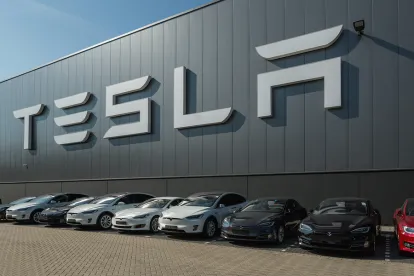Tesla’s Elon Musk has a long history of overpromising and under-delivering. In spite of being a 15-year-old company, which has yet to turn a profit, Tesla still finds itself with a market cap comparable with GM’s, while producing just 1% of the total vehicles sold worldwide by GM. The disparity between the two divergent companies has provided fodder for many short sellers, such as David Einhorn of Greenlight Capital, who viewed the company’s fundamentals as not justifying its share price. For example, Tesla shares failed to trend significantly downward, even though the company missed its Model 3 weekly production target of 5,000 vehicles by over a year. While Musk faced a recent unsuccessful shareholder rebellion, challenging his proposed list of board members, very little has moved the needle in the direction of the short sellers until recently, following Musk’s tweet and blog post proposing taking Tesla private at a then-20% premium (now higher).
At a time when Tesla was trending at $350 per share, Musk intimated that he had secured the necessary funding to take Tesla private at $420 per share. Later reporting revealed the alleged source of funds to be Saudi Arabia’s sovereign wealth fund. Following the efficient market hypothesis, one would predict that the share price would ultimately converge at the $420 premium price, as investors try to get in on the share buyout, and at first, that’s exactly where the share price appeared headed. By the end of the day of Musk’s announcement, Tesla’s shares were already halfway to the $420 projection. However, this price was short-lived and the share price quickly plummeted in the ensuing days, netting short sellers approximately $1.2 billion.
In his announcement, Musk argued that having Tesla publicly traded subjects the company to the volatility of the share price as well as skews the focus toward quarterly production results, even if such focus is detrimental to the growth of the company. However, if we delve into the company’s performance as it scales up production, it appears that there may be another consideration at play in the move toward privatization, especially when considering Tesla’s status as a long-term money-losing venture.
As detailed by Bloomberg, in Tesla’s early history, it raised most of its capital through traditional venture capital investments and debt to ensure survival. An initial public offering added hundreds of millions of dollars to the coffers and a U.S. Department of Energy loan made the company flush with capital. Tesla has also sold various bonds, including most recently junk bonds, which have seen varying profitability. Despite so much influx of capital over the years, in the last quarter, Tesla saw its most recent quarterly earnings mount a loss of over $700 million with $2.2 billion remaining in cash on hand. The company has consistently argued that profitability is just dependent upon reaching economies of scale with enough production volume. Even then, some analysts have suggested that Tesla would lose money on a base $35,000 model, poking holes in the company’s arguments. Without a trend change, it’s easy to see gloom up ahead and the potential for insolvency by the third quarter of 2019.
Enter: the proposal for taking Tesla private. An injection of cash from Saudi Arabia, after buyouts of disgruntled Tesla shareholders, may give Tesla more time to reach profitability, whether that is from vehicle sales or one of its other energy divisions. While it could be particularly costly to buyout shareholders at the premium price, some industry insiders believe that most shareholders would prefer to keep their stake in the company, as they have so far with all of its volatility. This loyalty should help reduce the takeover cost and allow the company to pocket more of the Saudi investment.
However, in the eventuality that Tesla does not find profitability in enough time, it bears to ask the question, “What happens with a Tesla insolvency?” With such strong global brand recognition, it seems impossible that Tesla could simply face liquidation. Instead, if it doesn’t simply reorganize to wipe out its debts, Tesla would be ripe for acquisition. However, a look at its underlying technology may raise an issue. Tesla’s powertrain is developed heavily as a partnership between Tesla and Panasonic. It is quite conceivable that Tesla owns little or none of its battery intellectual property. The drivetrain and design are certainly Tesla products, but may not be enough to lure in an OEM savior, especially with the heavy investment in EVs already by all of the world’s automotive companies, which may independently be able to achieve the results of Tesla at a lower R&D cost than a Tesla acquisition cost. Instead, it seems most likely that Tesla will live on as either a standalone or integrated arm of a technology company seeking to enter the automotive space without building a company from scratch, or a foreign manufacturer eyeing a fast track to global legitimacy. In the meantime, keep an eye on Tesla’s quarterly earnings to see if it makes any progress toward profitability before the cash is all gone.



 />i
/>i

